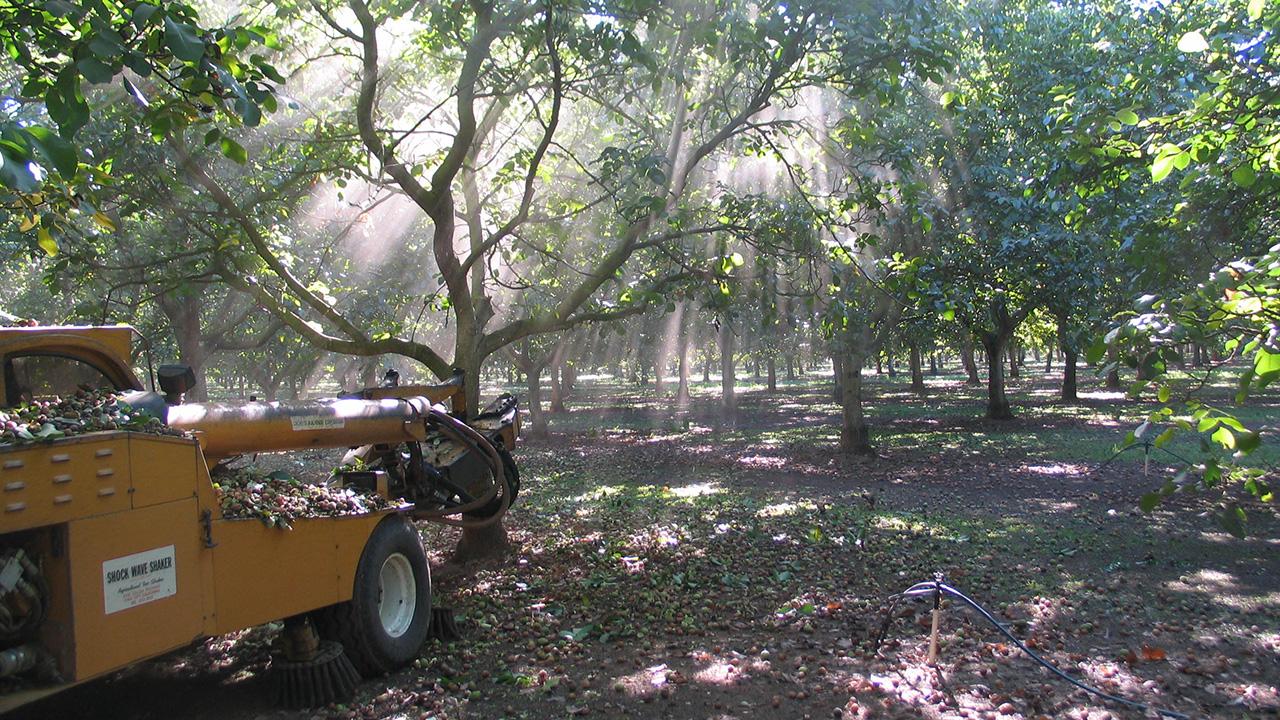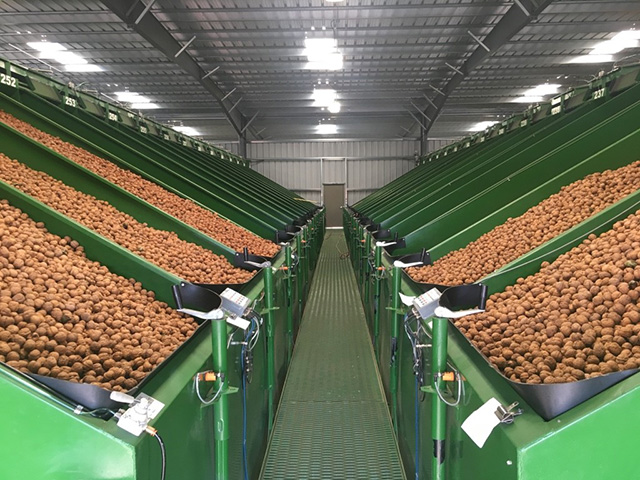
Quality, in a nutshell: Crisosto, Lampinen offer walnut guidelines
Advice wins award for “exciting work”

Better management of walnuts in the field, and better handling and storage of the nuts after they are harvested, are key to boosting nut quality, keeping consumers happy and benefitting growers who supply nearly one-quarter of the world’s market each year.
Because nobody wants dark, rancid walnuts.
Carlos Crisosto and Bruce Lampinen in the Department of Plant Sciences were among the UC Davis scientists who made recommendations to industry for handling the delicious, nutritious crop from orchard to grocery store to home refrigerator. Their advice: Harvest when the fruit is mature, by the time the hulls start to split. Right after shaking walnuts out of the trees, pick them up off the ground and remove the hulls. Keep the crop cool from start to finish.
And please, don’t store them near garlic.
People should use a color guide for shelled walnut meats so that distributors can direct nuts of different grades to the best possible markets. That’s because light-colored nutmeats indicate overall higher quality, fetching higher prices from distributors and consumers.
The team’s recommendations won an Editor’s Choice award from the publication Horticulturae this spring.
“It is great feedback to see that the industry investment on a research project’s results ̶ which is what these guidelines are ̶ is paying off in the short term by helping to reduce postharvest losses,” said Crisosto, a Distinguished Professor.
The United States is the world’s second-largest producer of walnuts, after China; and California grows 99 percent of the U.S. share, the scientists argued. While world production is projected to continue growing at a rate of more than 5 percent yearly, problems in growing, handling, transportation and storage are bruising the nuts’ visual appeal, flavor and nutritional content.
Protect the pellicle

Walnuts store well in the shell, but shoppers increasingly want to buy shelled walnuts. About two-thirds of U.S. exports are shelled, and that the part of the world market is growing the fastest, the team reported. But when the shell is removed, the nutmeat becomes more vulnerable to the ill effects of oxygen.
The kernel is made up of the papery, light-brown skin, called the pellicle, which covers the seed underneath. The seed is rich in fats and other nutrients. The pellicle is loaded with antioxidants called phenolic compounds, which appear to protect the seed and offer health benefits to people, including properties that fight cancer, heart disease, inflammation and other maladies.
“We think the pellicle is like the shield,” Crisosto said. “It’s the cover that’s protecting the seed from oxygen attacking.”
The pellicle starts out light-colored. The scientists suspect that, as its phenolics fight off oxygen, the pellicle turns dark. (Other UC Davis scientists are investigating this part of the puzzle.) As oxygen continues to attack, the researchers hypothesize, fats in the seed also oxidize. Nutrition fades, the flavor turns and that rancid odor sometimes wafts up when you open a bag from the store.
Cold storage and a color guide
Crisosto, Lampinen and team looked particularly at storage temperatures as a way to protect the pellicle’s color and quality.
Growers should ensure that harvested nuts are picked up promptly and not allowed to remain in the sun, and that hulls are removed quickly, because the hulls will warm the nut inside, the researchers advised. Once shelled, storing nut kernels at 32 degrees Fahrenheit keeps them fresh for more than a year, the researchers concluded. That includes cooling at each step: hulling, transportation, retail handling and at home. Low-oxygen packaging helps delay problems and improves taste.
But California produces a lot of walnuts: more than 799,000 tons in the 2023-24 year, the largest in state history, according to the California Walnut Board. That volume means proper cold storage isn’t practical for the entire industry.

The next step: Follow a system based on pellicle color to rank the quality of nut lots and match them to the appropriate market destinations, so as to fetch the best prices. The United Stated Department of Agriculture created a four-step system ranking nutmeats from “extra light,” the highest quality, to “amber,” the lowest quality.
“Most exciting work published”
Lampinen is a professor of Cooperative Extension. Other colleagues in the research were Irwin Donis-Gonzalez, in the Department of Biological and Agricultural Engineering; and Selina Wang, in the Department of Food Science and Technology.
This is the second Editor’s Choice award for Crisosto this year. In February, editors recognized his article offering guidelines for harvesting plums.
The Editor’s Choice award is based on recommendations by the scientific editors of MDPI, a publisher of more than 390 peer-reviewed, open access journals from around the world.
“The aim is to provide a snapshot of some of the most exciting work published in the various research areas of the journal,” the publishing house said in a press release.
Related links
Read the award-winning article, “Removing English Walnut (Juglans Regia) Ready-to-Use Shelled Walnuts Consumption Barriers.”

Media Resources
- Trina Kleist, UC Davis Department of Plant Sciences, tkleist@ucdavis.edu, (530) 754-6148 or (530) 601-6846
